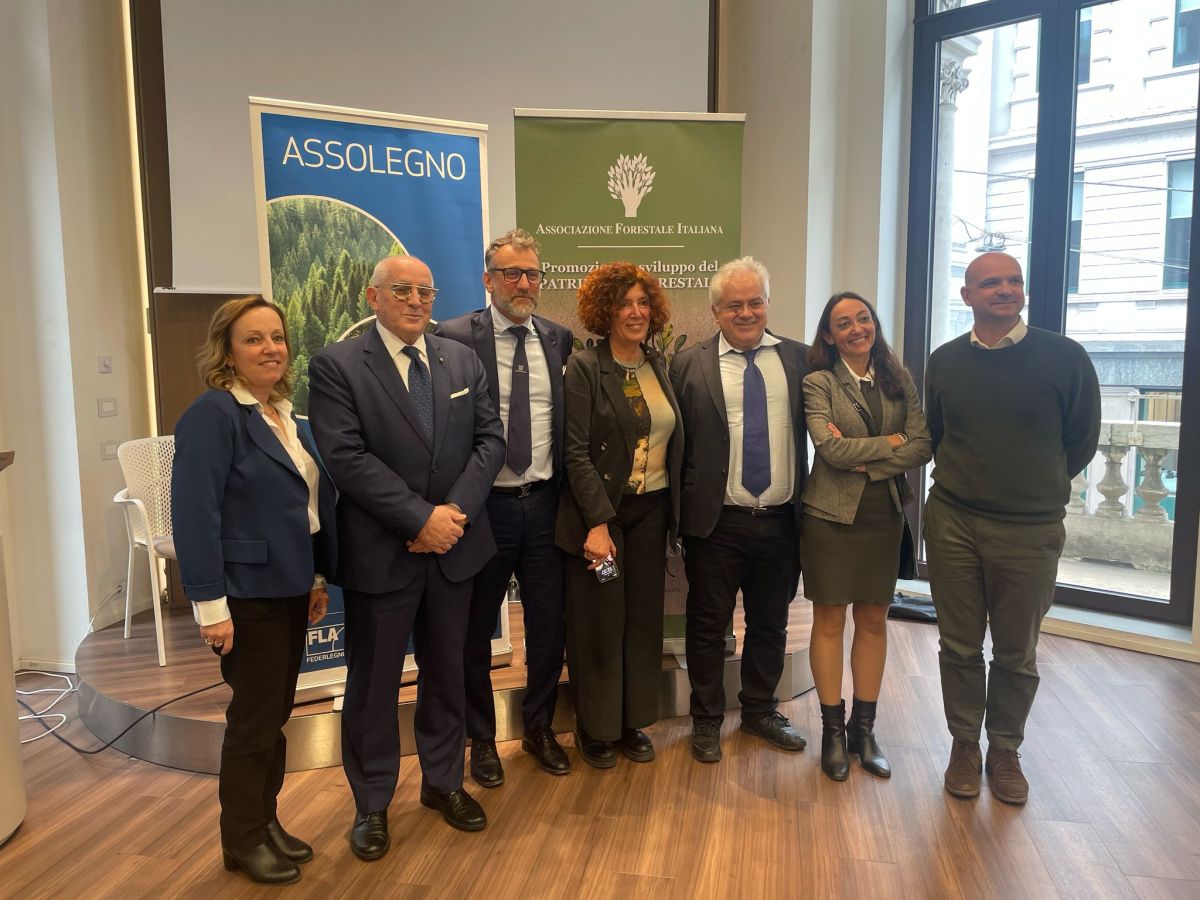MILAN (ITALPRESS) – “Greater use of wood from Italian forests can contribute to the decarbonization of construction and lead to less dependence on imports.” This was stressed by Assolegno, which represents primary processing industries and wood builders in Italy, during the conference “The contribution of Italian forests to the decarbonization of construction,” organized precisely on the occasion of World Forest Day, established by the UN.
During the meeting, organized in collaboration with AFI (Italian Forestry Association), Assolegno aimed to connect the worlds of industry, construction and research to promote the use of wood as a strategic resource. In attendance were Claudio Giust, president of Assolegno, the vice president of Federcostruzioni, Emanuele Ferraloro, Ornella Iuorio, associate professor at the Milan Polytechnic, Sergio Sabbadini of ANAB, Carla Calvino of INBAR and Valeria Erba of ANIT, while the Hon. Vannia Gava, deputy minister of Environment and Energy Security, Maurizio Martina, FAO deputy director-general, and Giorgio Maione, Lombardy regional councillor for Environment and Climate.
The meeting highlighted the importance of Italy’s forests, which cover 36 percent of the country’s land area and are continuously expanding. However, Assolegno stressed, “the use of domestic timber remains below its potential, with forest harvesting less than 40 percent of the annual increase. Incentivizing the use of local wood in construction could reduce dependence on imports as well as improve its ecological footprint, as wood acts as a carbon sink, with 1 m³ of structural wood able to store about 1 ton of CO2 equivalent.”
“The advantage of building with wood, from a purely construction point of view, is that it is a material that weighs five times less than concrete under the same load. This brings an advantage at the construction level. In addition, wood is an insulating and natural material, so automatically you have a wall that is both structural and energy-performing, which you don’t get with other materials because they are synthetically extracted and therefore cold,” President Giust explains.
“Also, contrary to what many people say, wood does not burn so easily, and the fire resistance of a wooden beam can be calculated engineering-wise, unlike that of a concrete or steel beam. This way, in the event of a fire, firefighters know exactly how the structure will behave. Moreover, wood is a concrete answer to the climate crisis: it absorbs energy from the sun and CO2 from the air.” Therefore, “our effort, also in synergy with institutions, must be to incentivize as much as possible small realities and wood supply chains,” Giust concludes.
-Photo xm4/Italpress-.
(ITALPRESS).

